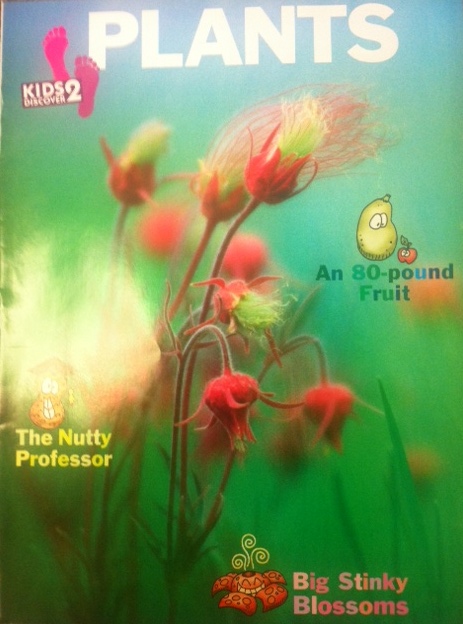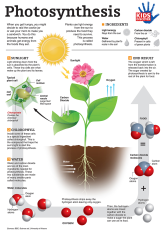 In the northern hemisphere, September is the time for launching offspring in the world. Plants do this in the form of seeds—a whole new generation of green wrapped up in unassuming packages. Unfortunately, plants have one distinct disadvantage compared to humans and other animals. They can’t move from their appointed spot on the planet. So, how to launch Jr. into the world with no feet, fins, or scales, let alone wheels? With pretty ingenious solutions, as it turns out.
In the northern hemisphere, September is the time for launching offspring in the world. Plants do this in the form of seeds—a whole new generation of green wrapped up in unassuming packages. Unfortunately, plants have one distinct disadvantage compared to humans and other animals. They can’t move from their appointed spot on the planet. So, how to launch Jr. into the world with no feet, fins, or scales, let alone wheels? With pretty ingenious solutions, as it turns out.
Gravity
Plants have five primary mechanisms for moving their seeds. Some plants simply let their seeds fall to the ground. For annuals (plants that live only one season), this method works fine. The parent won’t be around to compete with the offspring. However, for plants that do survive more than one season (perennials/shrubs/trees), having Jr. growing at your feet and competing with you for resources is not a good plan. How to solve this problem? Come up with a better way to launch your seeds.
Animals
One way to send seeds far from the parent is to have them hitch a ride. Plants using this method often have seeds covered with barbs or sticky mucous, perfect for attaching to unsuspecting passers-by. Some seeds, particularly those surrounded by tasty fruit, hitch a ride in the digestive systems of animals. Hard coatings allow them to pass through and emerge at the other end relatively unscathed.
Animals are also participants in a two-part arrangement that some plants have developed. For example, most nut trees simply allow their seeds to drop to the ground. The seeds are then carted away by squirrels, jays, and other animals. Some are eaten; others are forgotten. The misplaced seeds are able to grow into mature plants away from the parent.
Air
Anyone who has made a wish on a dandelion flower has seen wind dispersal in action. The variety of designs plants have developed to harness the wind is staggering. There are maple keys that spin and fly, cottonwood seeds that float gently, and dandelion seeds that fly along like tiny parachutes. If the wind is right, seeds from these plants can travel hundreds of miles. It’s a big gamble though. Most seeds don’t fall in suitable growing locations. This is why plants that use wind dispersal produce so many seeds.
Other plants depend on the wind in different ways. Poppy seeds, for example, can hardly be called aerodynamic, but these plants still depend on the wind. “Salt-and-pepper-shaker” style pods keep the seeds from falling directly below the parent plant. When the wind kicks up, the plant’s long, slender stalks gracefully bow in the wind, tipping the shakers and depositing the seeds.
Water
Plants in riparian/beach areas often employ water to move their offspring. These plants produce seeds that float. Water carries them away—hopefully to a suitable growing location. This dispersal method explains how remote islands have vegetation similar to land masses hundreds of miles away.
Mechanical
Probably the most entertaining of seed dispersal methods is mechanical. Some plants have developed the ability to “launch” their seeds away from the parent plant. These plants build up tension in their tissue, much like a catapult stores energy in a taut rope. At just the right moment, the tension is released and the seeds are flung. What a way to send off the kids!
Activity: Move Those Seeds
All this discussion about seed dispersal can get a little dry. One way to make it fun is to have kids pretend they are plants—it’s up to them what kind—and give them the task of coming up with ways to disperse seeds. Provide them with glue, tape, string, and any other fasteners you can think up, plus a variety of materials. I find that recycled items, like TP tubes, plastic containers, egg cartons and fabric scraps, work well for these kind of crafts. I like yarn, pipe cleaners, and dowels too. This is a great “clean out the junk drawer” project!
Books & Websites
- Nature: The Seedy Side of Plants: http://www.pbs.org/wnet/nature/episodes/the-seedy-side-of-plants/introduction/1268/ (amazing video of mechanical seed dispersal and other resources)
- Pre-K Lesson Plan: How Do Seeds Move: http://outsidemom.com/2011/10/traveling-seeds/ (lesson plan and activity from outsidemom.com)
- A Seed is Sleepy, by Diana Hutts Aston
- A Fruit is a Suitcase for Seeds, by Jean Richards
- Plant Secrets, by Emily Goodman
- The Tiny Seed, by Eric Carle
- The Carrot Seed, by Ruth Krauss



